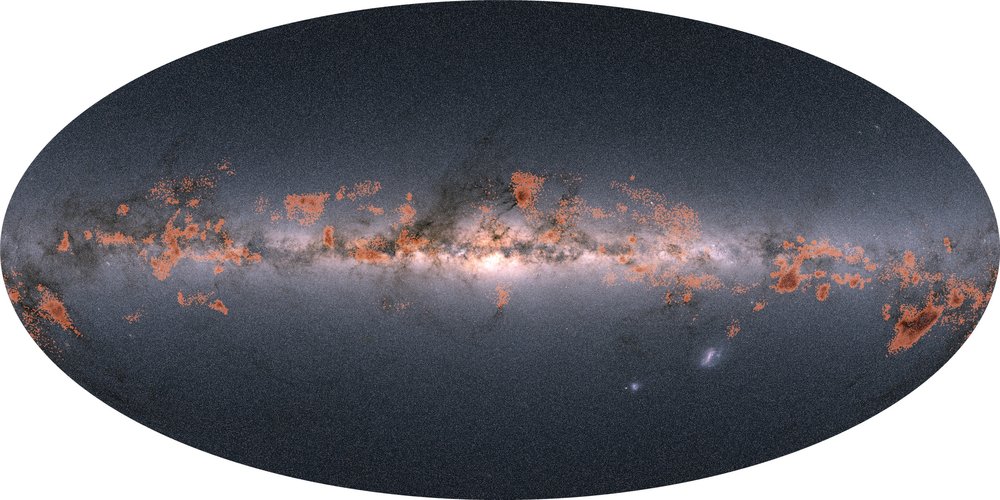The slow goodbye: Unravelling tidal tails

As clusters move through the Milky Way, they’re disturbed by different clumps and structures of matter, from molecular clouds to dark matter and to the ‘bar’ of stars cutting through our galaxy’s centre. These interactions tug at the clusters and stretch them apart, creating long ‘tidal’ tails of stars and gas.
“Tidal tails aren’t just remnants of a cluster's past: they’re powerful dynamical tracers that tell the tale of a cluster's lifetime and place in the galaxy,” says Tereza Jeřábková of Masaryk University, the Czech Republic, an expert in star formation and regular user of Gaia data. “Historically we’d only seen these tails around clusters in sparser areas of the Milky Way, as they stand out better against emptier skies. It was far harder to spot them in our galaxy’s densest regions – but Gaia changed all that.”
Thanks to Gaia's high-precision astrometry, scientists have been able to spot extended tails around the Hyades cluster and traced the kinematics of tails around the Coma Berenices cluster. Gaia has also dug into the properties of the tails themselves, finding them to frequently be asymmetric in density and length. It turns out that these tidal tails can be enormous, stretching over many thousands of light-years. The Hyades cluster, for example, though seemingly modest in size, has tidal tails that span huge sections of the sky – a silent testimony to the cluster's origin, evolution, and ongoing dissolution into the galaxy.
“The field is evolving rapidly, and has made progress even since we discovered the Hyades tails,” adds Tereza. “Researchers are now using Gaia-based methods to uncover tidal features in other nearby open clusters, such as Coma Berenices, Blanco 1, NGC 752, Praesepe, and more.”
Importantly, Gaia has pinpointed stars that have escaped their birthplace. This is important to understand more about clusters, their residents, and to identify more recent tidal features. It has also been instrumental in confirming that the stars within tidal tails are genuine escapees from the cluster itself, and not a chance alignment or stars that just happened to be in the area. Astronomers achieved this by taking tidal tail star candidates from Gaia data and looking at how they spin on their axes.
Thanks to Gaia, open clusters are no longer seen as isolated entities but as dynamically evolving structures, slowly dissolving into our galaxy and leaving traces of their past lives behind. “Current efforts are focused on detecting more tidal tails, pushing to larger extents and fainter limits, and refining what we know of the constituent stars,” adds Tereza. “As data improves and new methods emerge, our ability to reconstruct the past lives of clusters will only continue to grow.”
Upcoming sky surveys – including 4MOST and WEAVE – and missions such as ESA's Plato – ESA's forthcoming planet-hunter that will also characterise rocky exoplanets and their host stars – will complement Gaia's findings by revealing more about the stars in our skies, enabling us to study features such as tidal tails in greater detail.



